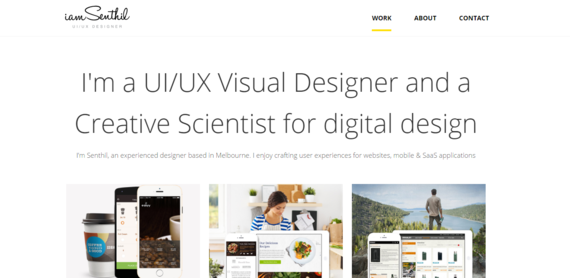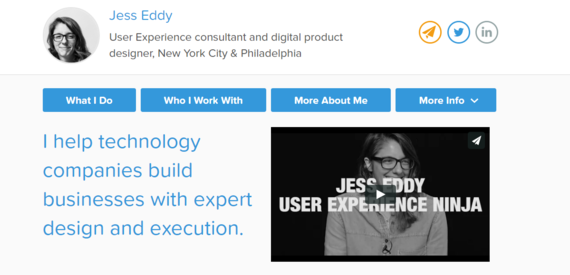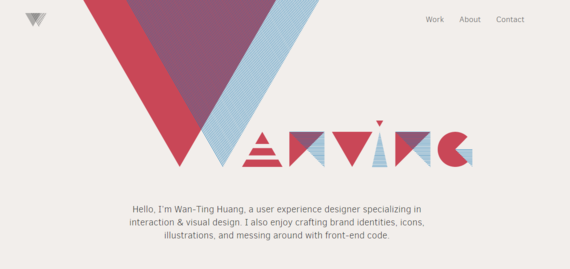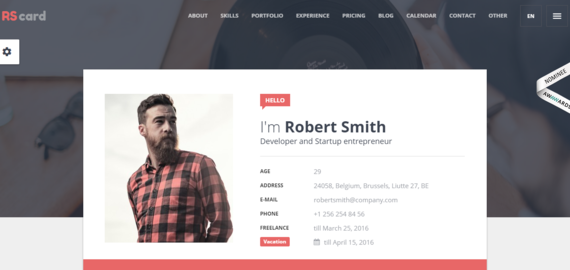by Tomas Laurinavicius Adventurous designer, blogger & entrepreneur

Image source: Tamarcus Brown/Unsplash.
Did you know that 90% of the information human brain processes is visual? Luckily enough, the job of a designer is nothing but visual work, and you have all chances to give clients a feel for your expertise.
While some years ago, we worked on printed portfolios and tried hard to make connections, today Internet took it to a whole new level. A solid design portfolio is the one and only gateway to the design industry.
Wondering why you, a design superstar cannot promote yourself in the digital environment to the amount you deserve? Well, sometimes the most experienced designers are the worst salespeople. It takes time to learn business, even if you are just a freelance designer, you’re an entrepreneur.
Today I’m trying to demystify and explain tips and tricks of an effective design portfolio.
Show people what they want to buy
Imagine you go to the mall to buy shoes. You’ll bypass clothes stores or jewelry boutiques. It’s true for design industry too. People like seeing samples that fit their demands and objectives. They need to see what they want to buy.
Thus, don’t try to address everyone. Narrowing your target will work to your advantage. Healthcare structures and governmental bodies won’t value your sense of humor. Similarly, advertising agencies will never contact you unless they see a touch of creativity and innovative thinking in your works.
To sum up, always approach your design portfolio as a storefront. Sell one item but make it the best in the market. To do it, you need to determine first who you want to knock on your shop door?
Keep it simple
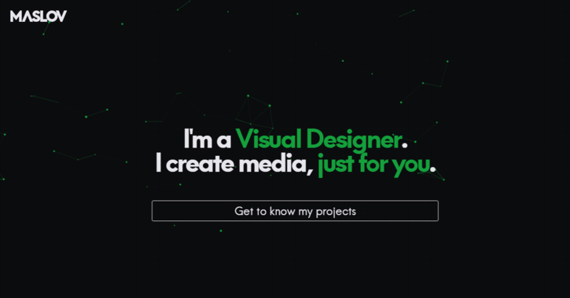
Image source: janmaslov.de.
As designers, showcasing our creative thinking must be our primary objective. This desire often results in some of the most creative website layouts, which not exactly what you need to focus on. You are not a web development agency to show how you can rock it. It’s your design projects that must show your creativity and innovative approach.
Thinking why not show creativity both ways? The answer is simple. We need to make sure your design portfolio is the one, and only thing site visitors see and remember. Nothing else must distract their attention, so try to keep your portfolio website clean a focus on your work.
Go for quality instead of quantity
Image source: iamsenthil.com.
Let’s confess it, we don’t like shopping in stores where there are too many goods to make a choice from. High-quality items often get lost in a lot of goods. Stores with limited products placed in prominent spots are more welcoming and motivating.
This is the golden rule of a useful design portfolio too. Overstaffed projects will hurt the chances of high-quality works to be noticed and valued. Thus, make an online portfolio that is eye-catching but never overwhelming.
Your portfolio is not an art gallery, and people don’t expect to see all works you ever did. They need the best of them.
Share the story behind the project
Many customers know what they want. Still, consulting a professional and getting some ideas is always a good idea. Not to mention, many people consider designers as “idea” machines and want them to propose solutions. Your job is to assure them you are such a professional before they even contact you. Storytelling is a great way to do so.
Write short backstories for projects to show clients what the problem was, what you had to achieve with your design and how exactly you nailed it. Clients need to know you won’t scratch the work simply to earn money. Prove them you care for customer issues and what is more important, you have excellent problem-solving skills.
In case you don’t want to share the story for every project, you can dedicate a separate section to case studies. Trust me, this very section will have the most converted clicks and calls in a short while.
Keep it up to date
Image source: jesseddy.com.
Some designers make a portfolio website and think they have done their lifetime homework. Too bad! Experience and technological developments push you to professional growth, which must be depicted in your design portfolio. Let’s confess it, some works which you were proud of a year ago, have major flaws in your eyes today. You should get into the habit of removing these works and updating them with your latest design pieces.
In case you don’t have coding experience, you should opt for an easy-to-use CMS, like WordPress for instance, to be able to make changes yourself. And there are also many plugins and add-ons nowadays with very affordable prices to make your life easier as a site owner.
Show your portfolio to clients
Image source: wantinghuang.com.
All other points are useless if you don’t follow this one. You can have an awesome website that shows your creativity and builds trust towards your professionalism. Still, it won’t do you any good, unless people visit it. Think of ways to show it to clients.
While you could bypass programmers when making the website, you probably won’t be able to ignore SEO and online marketing specialists. People who need amazing design works, deserve to know where you are. Making search bots work for you is good, but you can make personal connections too.
Be active in professional networks and show off your design works. You can post a mix of content types, such as demonstrating how your work progresses from initial scratches, asking people to choose from two design versions, etc. Some of them will turn to you in the future.
Help clients get in touch with you
Image source: Rs-Card.
Last, but certainly not least, you should help clients to contact you quickly. They won’t navigate through your website to find contact information in a well-hidden corner. Have them at the bottom of every page or have a separate contact info section.
Besides, you should give clients a chance to choose how to communicate with you. It is up to them to determine whether to give you a call or send an email. If you have time, you could have chat section too.
Finally, get back to them as soon as possible, visual images are subject to short memory span, and you should make an appointment as long as the lead is still impressed.
Conclusion
If one or many of these points seem to be the reason why you’re desperate about the number of your current clients, take on the recovery process immediately. An excellent design portfolio will open new doors for you.



